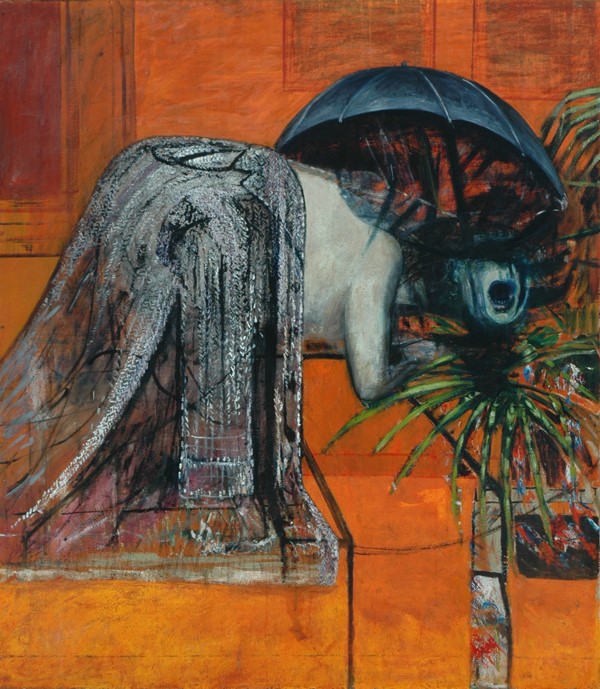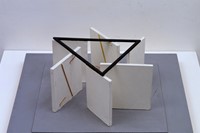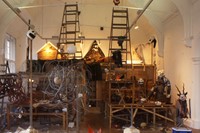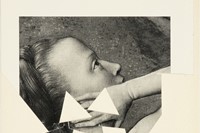An in-depth look at one of Bacon's most pioneering early works
The screaming mouth and eyeless face of the sub-human creature in this painting make it unmistakably by Francis Bacon. It is an early work from 1946 – Figure Study II, created not long after his breakthrough, Three Studies For Figures At The Base of a Crucifixion. (This master of existential dread would famously suppress his previous efforts, destroying what he had and prohibiting the sale or exhibition of what had been sold.)
In what would become a typical set-up for Bacon, this crouching, bare, animal-man, seems penned in, overwhelmed by his clothes and the room in which he is enclosed. He has been reduced to base essentials — the violent maw, the grotesque sexualised head and limbs. All this figure can do is howl like an animal in agony – like the shrieking nurse from Eisenstein’s film Battleship Potemkin or the colour photographs of diseased mouths in a dentistry book that famously obsessed the painter.
The work’s companion piece, Figure Study I, hangs in the Scottish National Gallery. It is a rare example of a work by Bacon without a figure, depicting the pile of clothes – a coat and hat – from which the everyday human monstrosity is about to emerge. Figure Study II is currently part of artist-turned-curator Simon Starling’s show, Never The Same River: Possible Futures, Probable Pasts, at Camden Arts Centre, a show that, as the title suggests, looks to weave an alternative history of artworks from the past century.
Bacon’s work offsets an installation by Jeremy Millar, riffing on Aby Warburg’s Mnemosyne Atlas – the famed boards draped in black, on which the cultural theorist pinned images of artworks through the ages, searching for universal truths in form and gesture. For Bacon the atheist, there could be no such absolutes: he looked at a Godless world and saw unending chaos.
Never The Same River: Possible Futures, Probable Pasts is at Camden Arts Centre, London until 20 February.



